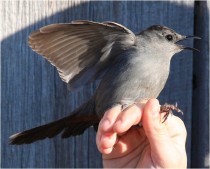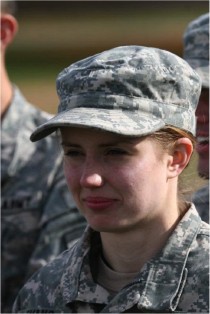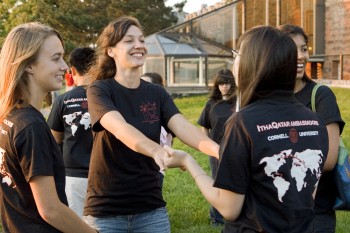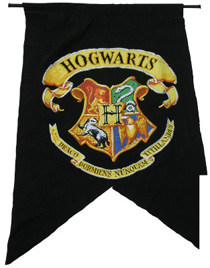THE ESSENTIALS
THE ESSENTIALS FLORA & FAUNATo catch a catbird
A gray catbird (Dumetella carolinensis) found itself in the catbird seat in May when it was captured and released at the Appledore Island Migration Banding Station -- making it the 100,000th bird banded at Appledore.
The station is part of the Cornell- and University of New Hampshire-operated Shoals Marine Lab in the Gulf of Maine, six miles off the coast of Portsmouth, N.H., where thousands of migrating songbirds stop each year. The resting spot is an ideal location for researchers to study the migration and stopover ecology of neoarctic-neotropical migrants.
More than 131 species have been banded at Appledore since 1981. On one notable day in May 1985, nearly 600 birds were captured and released.
Many birds banded on Appeldore have been sighted far afield. One northern waterthrush, for example, was banded on Appledore in August 1992 and caught again by a bird-bander in Venezuela in October 1994.
Army strong
Army strong
Student and Army cadet Carolyn Evans '10 finished ahead of nearly 500 other Army ROTC cadets in the Army Physical Fitness Test, held as part of cadet training in Fort Lewis, Wash. Passing the test is a prerequisite to be commissioned as a U.S. Army lieutenant.
Thousands of college students converge in Fort Lewis each summer to attend Army ROTC's capstone training and assessment exercise, the 29-day Leader Development and Assessment Course.
Evans scored 366 points on an extended scale. "The maximum is 300, but because the Army is full of type A personalities, we've got to have a measure for those who far exceed the standard," said Army public affairs officer Maj. David Rudock. "So to recognize achievement and to show that [a] cadet or [a] soldier has put in so much more effort, we created this extended scale."
Evans' score is "awesome," Rudock added.
Her achievement places her in the top 2 percent of her 500-person regiment. The test, which measures the students' strength and endurance, consists of sit-ups and push-ups, each timed over two minutes, and a two-mile run.
Shrinking the distance
When 12 students from Weill Cornell Medical College in Qatar (WCMC-Q) came to Ithaca in the summer of 2008, they were met by a welcoming committee of fellow Cornell students -- IthaQatar (IQ) Ambassadors -- who introduced them to campus, showed them around the area and began a dialogue aimed at bridging the distance between Ithaca and Doha.
This past summer, the second generation of IQ Ambassadors took the vision of the program's founders and ran with it.
Like last year's group, this year's 19 Ithaca undergrads, two staff members and 24 Qatar students bonded on Cornell Outdoor Education's Hoffman Challenge Course, heard a chimes concert featuring Middle Eastern music atop McGraw tower and took weekend trips to New York City and Niagara Falls.
CALS dean to step down in 2010
Susan Henry will step down as dean of the College of Agriculture and Life Sciences when her second five-year term ends June 30, 2010.
She will have served as the Ronald P. Lynch Dean of Agriculture and Life Sciences for 10 years, as long as any recent college dean at Cornell.
"My time as dean has been enormously satisfying. While I will miss my daily interactions with the many committed people with whom I work closely as dean, I expect to continue my relationships with the CALS community as a faculty member when I return to teaching and research," Henry said. "I am continually impressed by the excellence of our faculty, students and staff and the level of enthusiasm of our alumni and stakeholders for providing leadership and improving people's lives in challenging times. I am very proud to be part of that effort."
Henry, who is a professor of molecular biology and genetics, will teach and spend more time in her research lab.
Welcome to Hogwarts
There's no quidditch pitch or owls that deliver mail. But Cornell does have the look, feel and school spirit of Hogwarts School of Witchcraft and Wizardry, the school where Harry Potter, the boy wizard we all wished were real, got his top-notch education.
Applywise.com, an online admissions counseling site, recently named Cornell one of five university campuses that most resembles Hogwarts -- but not because of magic, real or imagined. The list is based on physical appearance, residential community, academic rigor, extracurricular opportunities and unique traditions, according to the article.
Cornell is situated far from the hustle and bustle of Manhattan, much like Hogwarts is removed from London, the citation reads. West Campus buildings, appropriately called The Gothics, are cited for their resemblance to Hogwarts architecture, as are the War Memorial, Risley Residential College and the Law Library -- all "gothic masterpieces." And, of course, Cornell students study hard and endure long winters, just like Harry and his cronies.
As if you needed another reason to apply to Cornell. Bring your wand and broomstick, just in case.
A concerto dedicated to CornellA concerto dedicated to Cornell
Charles Staadecker '71 wanted to honor his alma mater and his 25-year marriage, so he commissioned a concerto for the Seattle Symphony and dedicated it to Cornell in honor of his anniversary.
The 26-minute work in three movements, by Grammy-nominated composer Samuel Jones, conveys the journey of a Cornell undergraduate from admission to graduation.
"It's a dialogue, with the student's theme and the university's theme as two main voices," Staadecker said. "It relates to a person ready to embark on his life course full of optimism and passion."
Staadecker first approached the symphony in 2006, and he and his wife, Benita, were involved in the composition process. (The Staadeckers have sent two children to Cornell -- Tess '07 and Benjamin '09.)
The Concerto for Trombone and Orchestra, subtitled "Vita Accademica," was performed by the symphony in April at Benaroya Hall in Seattle.
Not yet built, already tweeting
Want to stay up-to-the-minute on the progress of the College of Architecture, Art and Planning's Paul Milstein Hall, but don't have time to sit around the construction site dodging backhoes and pile drivers?
The Milstein Hall Twitter feed (twitter.com/CU_MilsteinHall) offers a real-time building's-eye view (ably translated from building-ese to English by AAP communications director Aaron Goldweber) of the operation, with regular updates on construction progress, news, photos and related links, including one to a live on-site webcam.
The 47,000-square-foot building, designed by architect Rem Koolhaas and the Office for Metropolitan Architecture, will connect to Rand Hall and East Sibley Hall. Construction is expected to take about two years.
Why the twitter? "The idea is to create the most transparent, intimate look at the construction of a Rem Koolhaas building ever," said Goldweber, who gets regular updates from the project manager and follows up with some reportage of his own.
New Cybertower brings faculty into sharper focusBeginning this September, visitors to Cornell's Cybertower Web site will find more videos and a new section featuring easily digestible samples of Cornell research and scholarship.
Cybertower, launched 10 years ago by Cornell's Adult University, is targeted at anyone interested in Cornell scholarship, but especially alumni and prospective and entering students and their families. "This is an ongoing experiment," said Ralph Janis, director emeritus of CAU, "to find ways to bring all parts of the university community closer to the faculty."
The revamping of the site www.cybertower.cornell.edu follows a user survey last summer. In particular, users asked for easier navigation -- fewer clicks to get where they want to go -- and better video.
The updated site adds larger and sharper video that can be viewed full screen without loss of quality.








